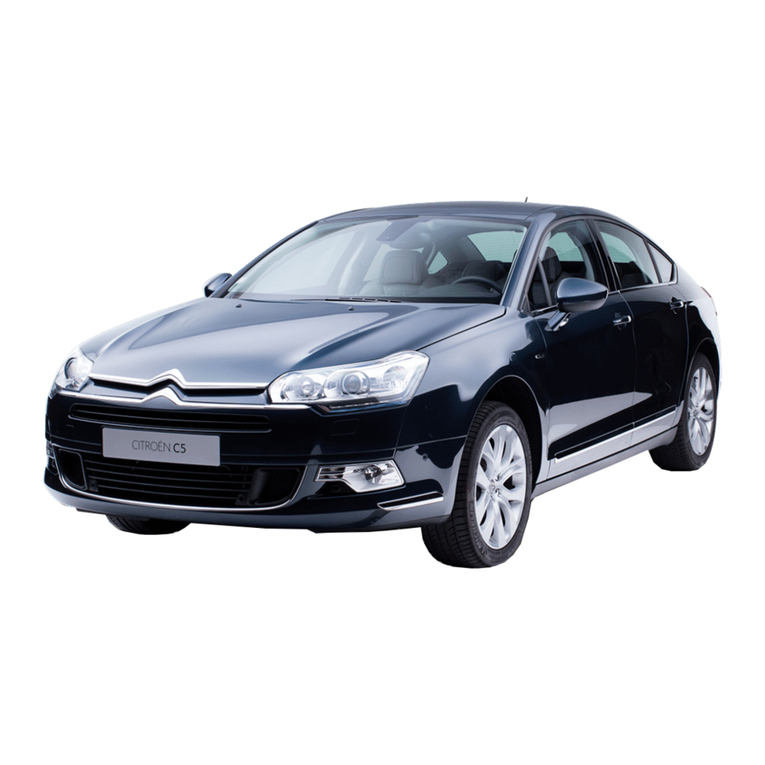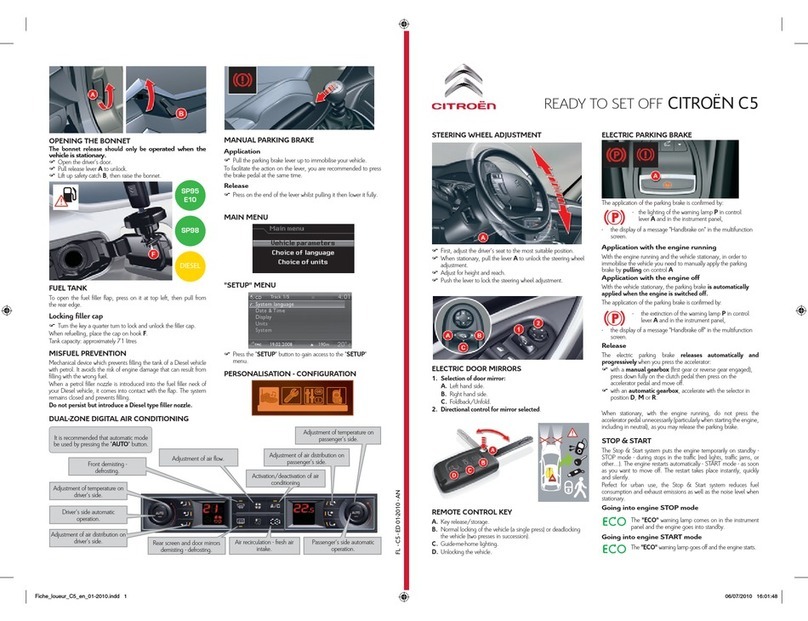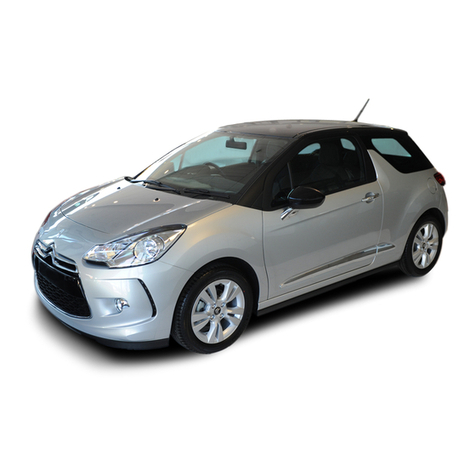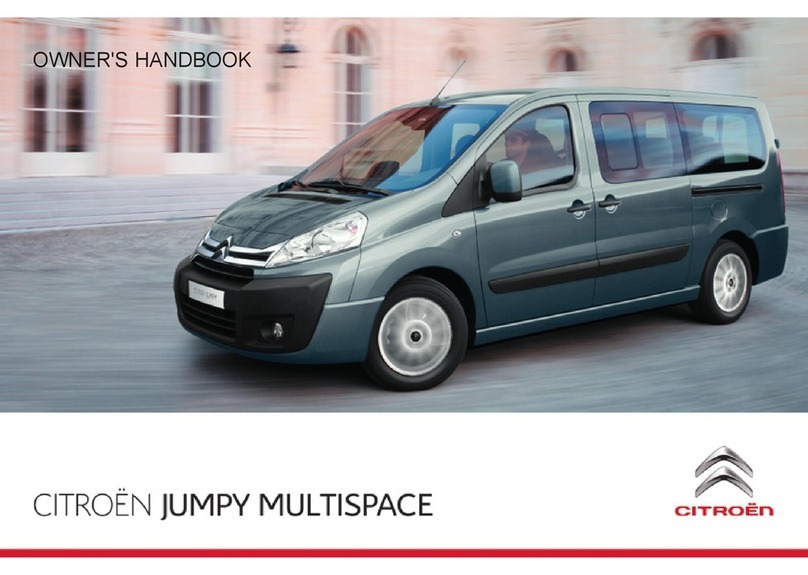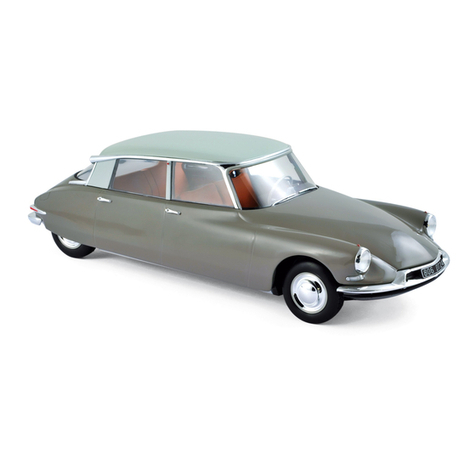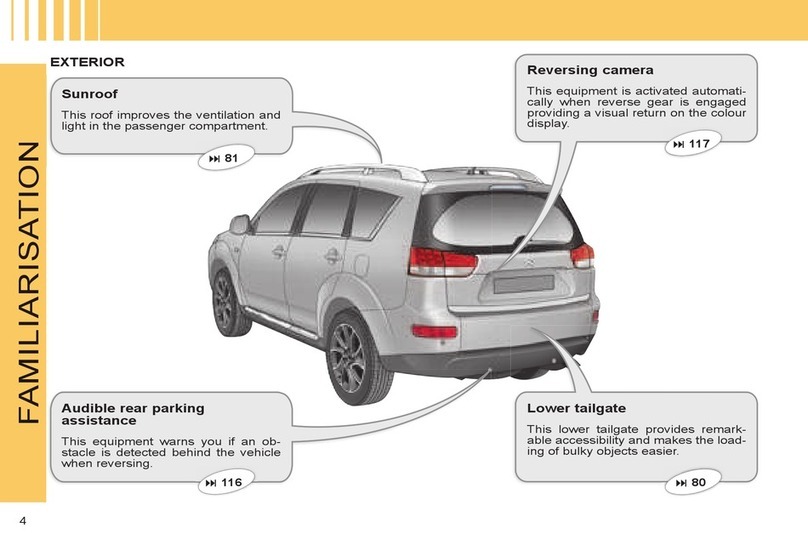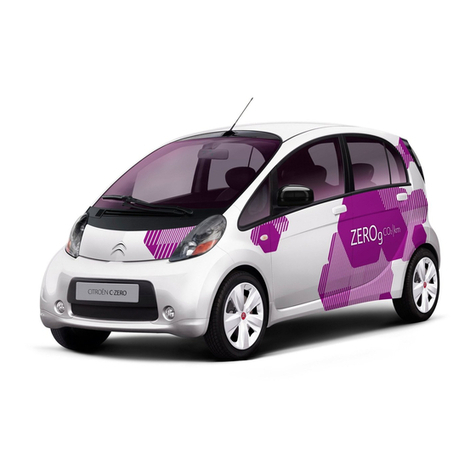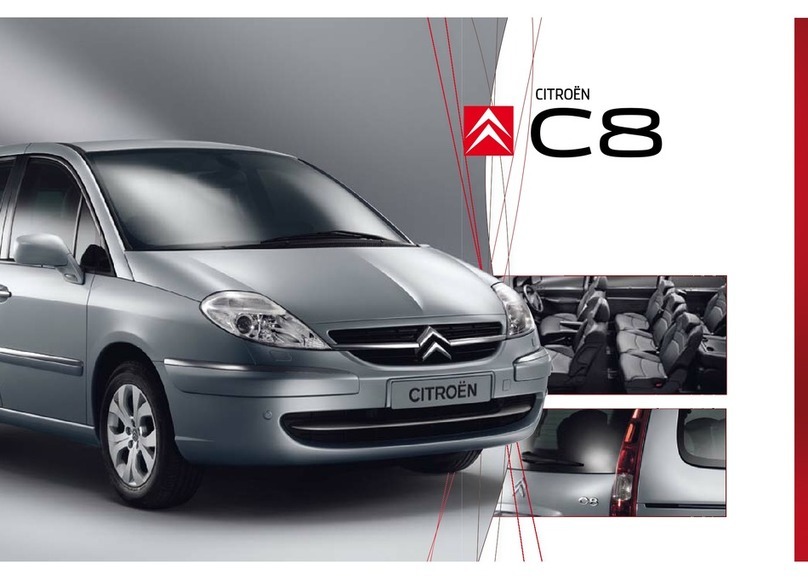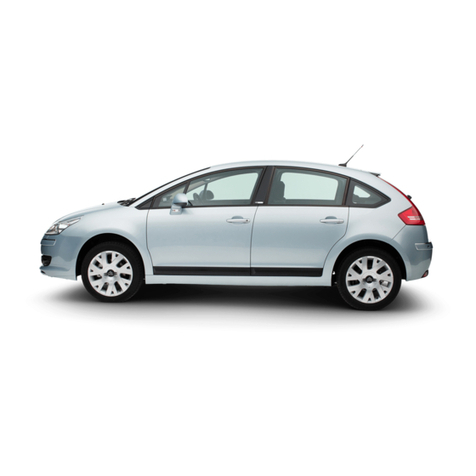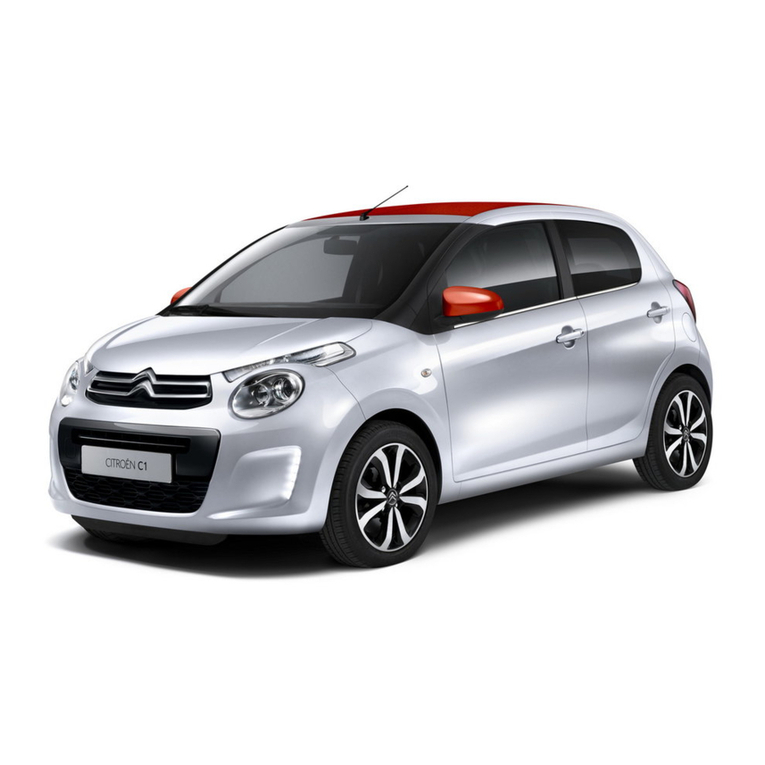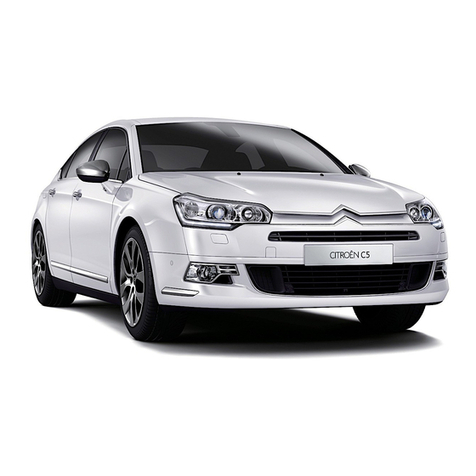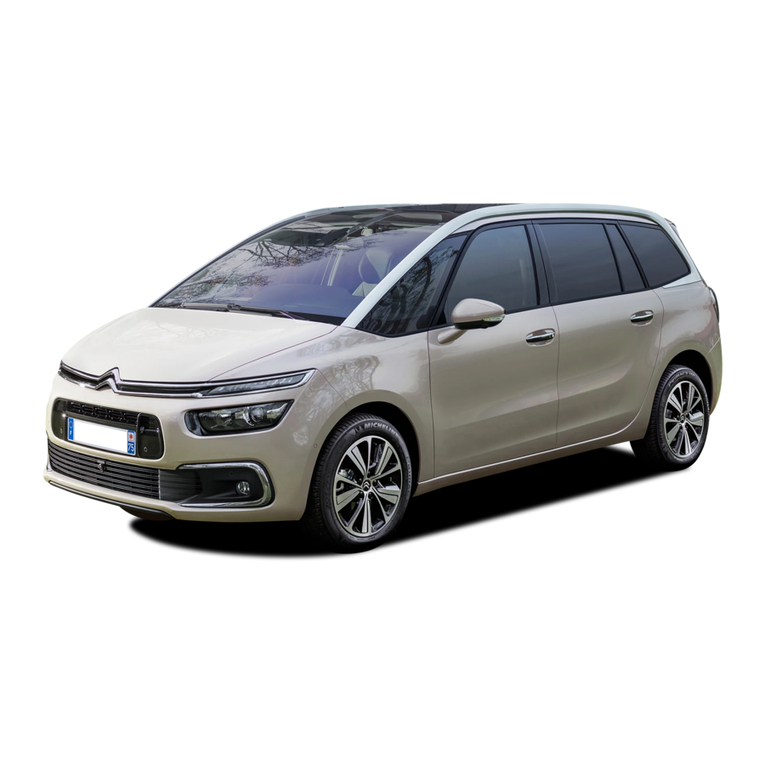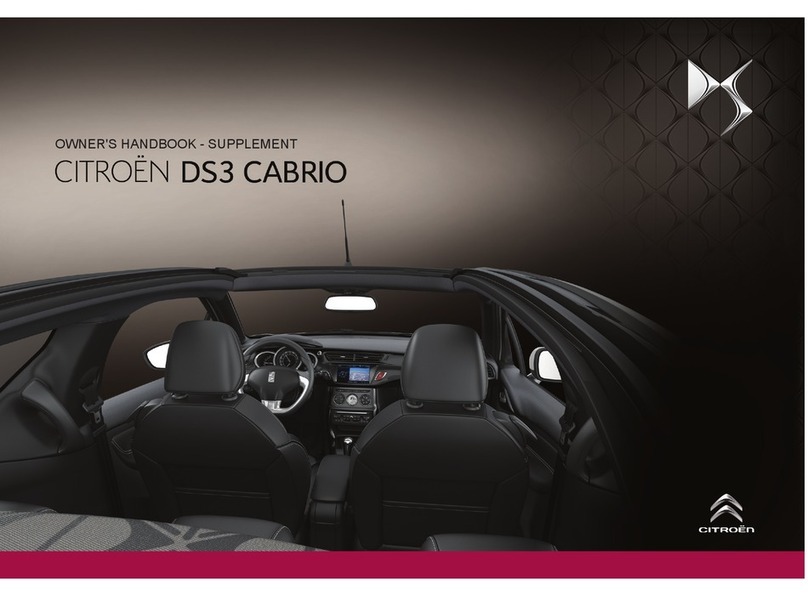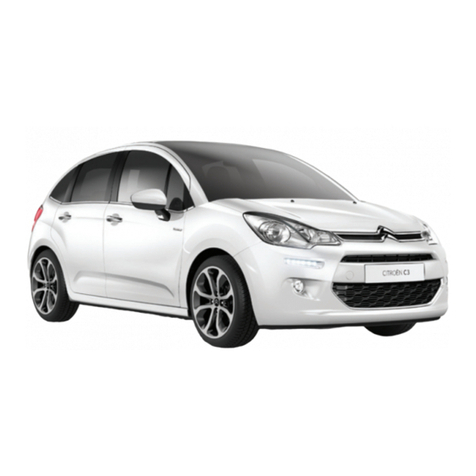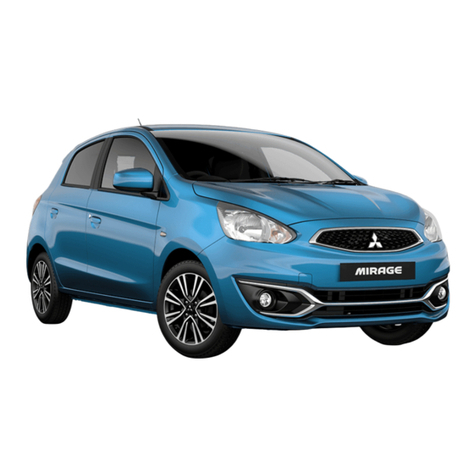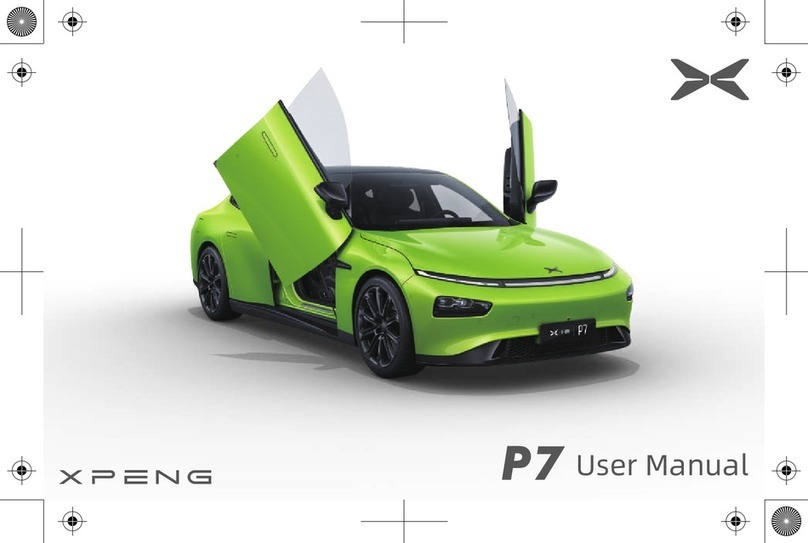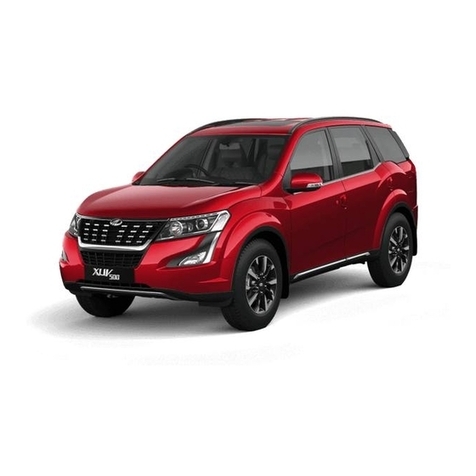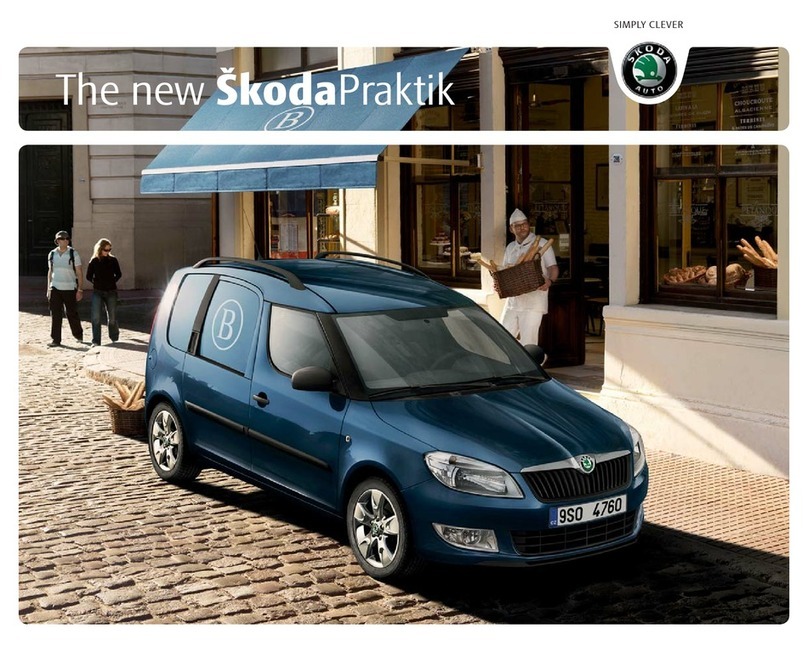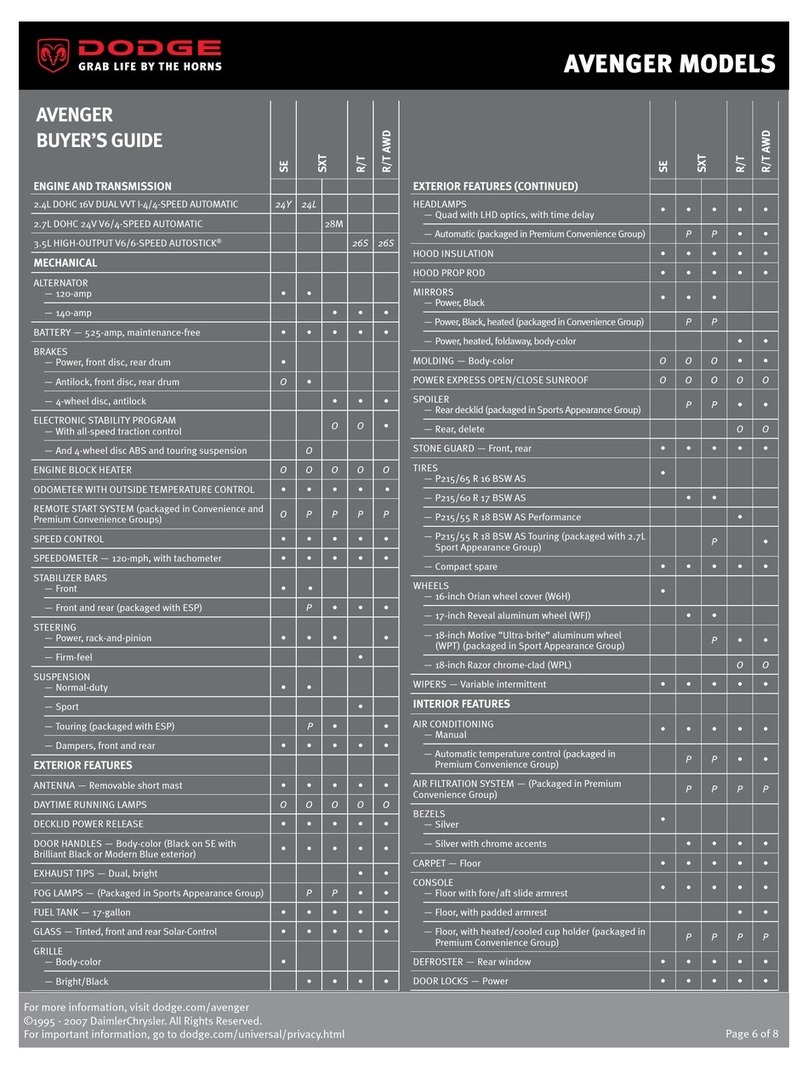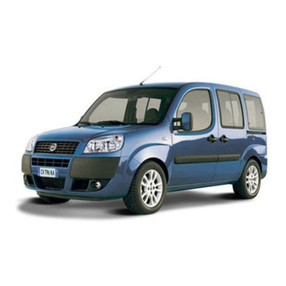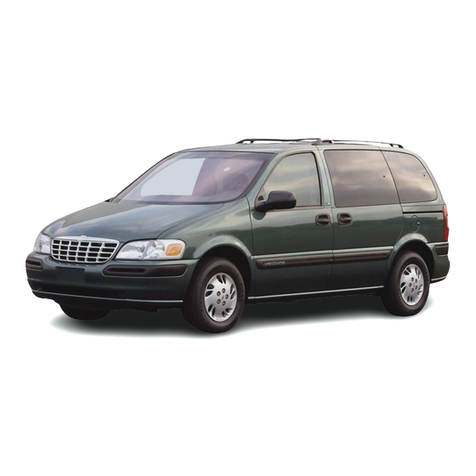
5
Driving tips
Driving tips
Improving fuel economy
The following tips will help you in improving
fuel economy.
– Avoid excessive idling.
– Avoid sudden acceleration.
– Avoid unnecessary deceleration and
stopping.
– Keep steady cruise speed as much as
possible.
Keep the air filter clean
If the air cleaner is clogged with dust, there
will be greater intake resistance, resulting in
decreased power output and increased fuel
consumption.
Keep tire pressures correct
Under-inflating of the tires can waste fuel due
to increased running resistance of the tires.
Keep your tires inflated to the correct pressure
shown on the label on the driver’s door lock
pillar.
Do not use tires other than those
specified by Citroën. Never use
different sizes or types of tires on the front
and rear wheels.
Driving on hills
When climbing steep hills, the vehicle may
begin to slow down and show a lack of power.
If this happens, you should shift to a lower gear
so that the engine will again be operating in its
normal power range
While driving down a hill, never turn off the
vehicle.
Try not to hold the brake pedal down too long
or too often while going down a long hill. This
could cause the brakes to overheat, resulting in
reduced braking efficiency.
Use the parking brake when parking
your vehicle and shift the gear shift
lever into the first gear or reverse gear
position for the sake of safety.
Driving on slippery roads
Under wet road conditions, you should drive at
a lower speed than on dry roads due to possible
slippage of tires during braking. When driving
on icy, snow-covered, or muddy roads, reduce
your speed and avoid sudden acceleration,
abrupt braking, or sharp steering movements.
Driving on stopping and starting on incline
After the vehicle is stopped on the incline and
is to be driven again, it is recommended to
apply parking brake, release the brake pedal and
press the accelerator pedal gently.
Once a slight movement is detected in the
intended direction, the parking brake should
be released so that the vehicle moves without
rolling back or forward.
Creep function (Electric)
The vehicle is equipped with creep function,
which reduces driving stress in the bumper-to-
bumper traffic condition.
The creep function will be active in the
following conditions :
– Vehicle in D, Ror ECO mode.
– Parking brake disengaged.
– Driver seat belt fastened.
– All doors closed.
Once the brake pedal is released, without
pressing the accelerator pedal, the vehicle will
start moving in the intended direction slowly
until it achieves a speed of 7 km/h.
If the vehicle is on steep incline, it may not be
able to achieve 7 km/h.
Pressing the accelerator pedal will further allow
higher speed.
Optimising the driving range (Electric)
The vehicle's consumption of electrical energy
greatly depends on the route, speed and driving
style, as well as the use of the heating/air
conditioning.
Try to remain in the "ECO" zone on the power
indicator, by driving smoothly and maintaining a
steady speed.
Anticipate the need to slow down and release
the accelerator pedal allowing the motor to
apply regenerative braking there by slowing
down and at the same time recharge the high
voltage battery, there by increasing the range of
the vehicle.




















